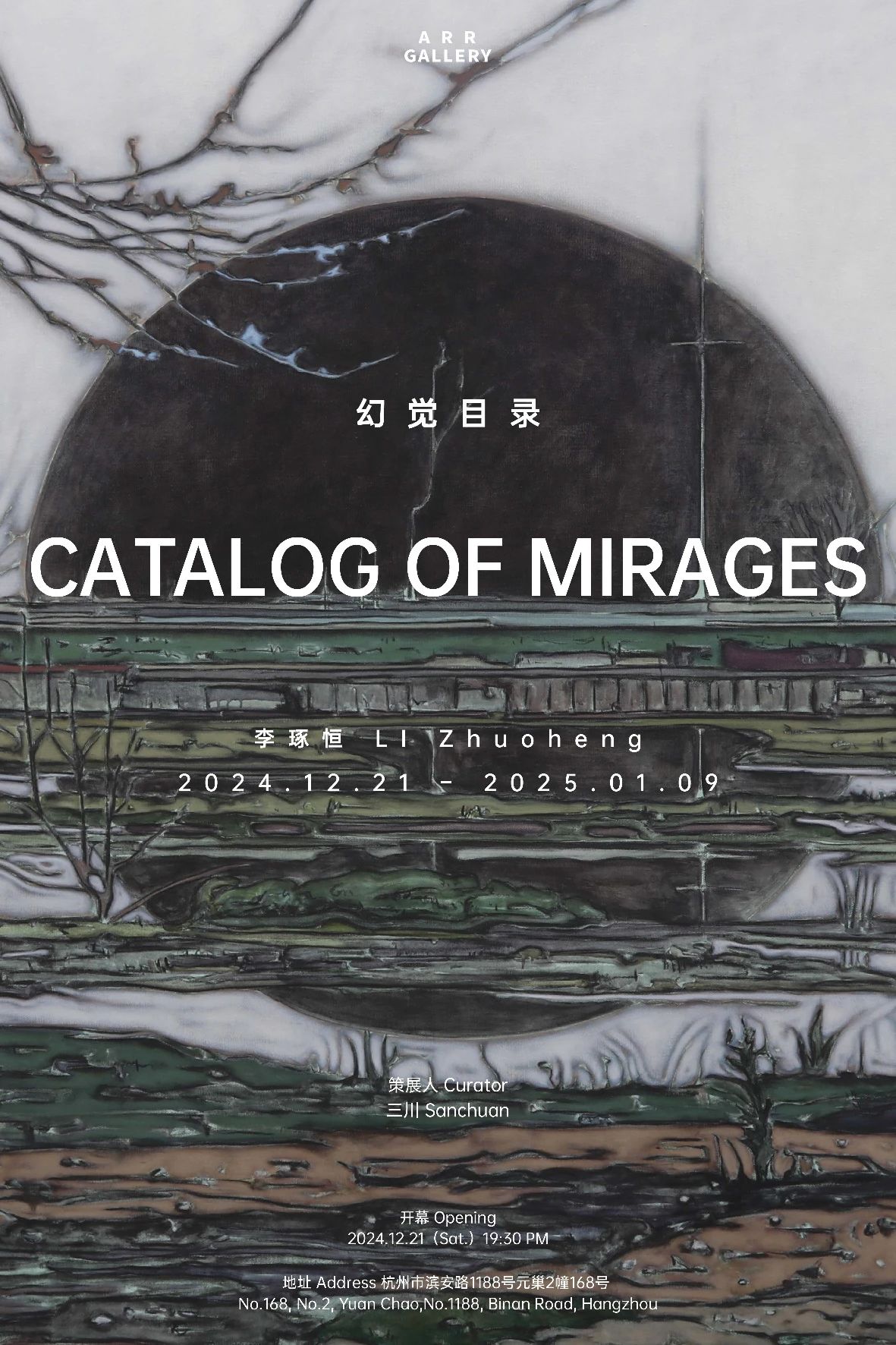展期 Period:
2024.12.21—2025.1.9
艺术家 Artist:
策展人 Curator:
地点 Venue:
前言 Introduction:
李琢恒试图通过绘画这一动作来生成连续的客观视角,其意义不在于讨论媒介或技术与人之间的主体性地位问题,而将自身视作一个如电子处理器般对输入信息如实作出反映的中介,且需要承认一切通过该路径生成的图像,这一承认的动作既是“如实还原”与“制图”。尽管艺术家在这一过程中试图建立绝对的中立性,但若将身体视作其居间的媒介,它会如同媒介决定了我们的处境一般,媒介化了的身体同样会决定每一张通过绘画动作还原出的图像的处境。
这一具有多向塑造(媒介—身体—图像—绘画)关系的创作路径将引出若干问题:如绘画中如图卷处理式的,反复出现的横向构图;缠绕的线路与河床边的风景周围,被有意虚化的轮廓边缘;古早电子屏幕界面中的符号与信号;对技术物的凝视与图腾化的建构冲动等等 ...... 这些痕迹都将指向一个被加密过的记忆源。如同芯片处理器的结构可被视作现代社会权力等级秩序的隐喻,李琢恒绘画中的图像也可被理解为是来自于他的经验黑箱中继而通过绘画这一动作被揭示出的寓言图景。
艺术家自有其工作源头处的暗箱,艺术史中历数的艺术家们同样也是这么做的(使用镜子与光学透镜等技术媒介),这无关乎于是“绘画”还是“制图”的优先级争论,重要的这一生成和转化系统在运作中的有效性(更多是生效于艺术家)。由此“幻觉目录”在这个展览中具有双关式的读取路径:其一是将“幻觉”与“目录”都视作名词,由此可将他的绘画与图像视作可通过它们进入的,那一被竭力再现的寓言图景中的窗口;其二是将它们都视作动词,在第二种语义中,艺术家首先将身体投入了那个位于源头处的黑箱中,以观察者的身份开始工作并如实记录、观看与呈现,这一命名的动机既是希望做出“睹物思人”之提示。
#pagebreak##
Li Zhuoheng seeks to generate a continuous, objective perspective through the act of painting. His intention is not to address the subjectivity of the relationship between media, technique, and humanity, but rather to position himself as an intermediary—a processor akin to an electronic device—faithfully reflecting the input data and acknowledging all images produced through this pathway. This acknowledgement is embodied in both “faithful reproduction” and “mapping.” Although the artist strives for absolute neutrality in this process, the body itself, as a mediating instrument, inevitably shapes the circumstances of each image restored through the act of painting. Just as media shape our conditions, a mediated body determines the context of every image it produces. This multi-directional interplay (medium–body–image–painting) generates recurring elements in Li’s practice, such as the scroll-like, horizontally oriented compositions; blurred edges surrounding tangled wires or riverside landscapes; symbols and signal codes reminiscent of early electronic screens; and an impulse to gaze at and totemise technological artefacts. These elements point to an encrypted source of memory. Much like the structure of a microprocessor serves as a metaphor for modern hierarchical power systems, the images in Li Zhuoheng’s paintings can be understood as allegorical landscapes emerging from the black box of his experiences, revealed through the act of painting.
Pierre Klossowski once described Phantasms as delusional images born from the vital impulses of life, and simulacra as their deliberate reproduction, mimicking the formless agitation of the soul. Simulacra, Klossowski argued, function primarily as tools of exorcism—replicating the feared elements within the phantasm to banish their demonic grip. The images in Li Zhuoheng’s paintings are drawn from the fields and riverbeds near his studio, from landscapes where nature and technology intertwine. His vision is also shaped by childhood dreams and the imagery of early electronic media, such as retro gaming consoles. This, in turn, suggests another aspect of the artist’s intent: by revisiting lived experiences and colliding with time now past, he constructs an allegorical context in which meaning can once again take effect. Through this, Li seeks to dispel the unknowns and fears embedded within the synchronic experiences of an era saturated with media, technology, and information. These fears, he implies, are simply objective aspects of reality itself. By reconstructing these contexts, the artist proposes a means to relearn how to coexist with them.
The title Catalog of Mirages presents a dual interpretive path revealed in this exhibition: It can be interpreted as nouns, “mirage” and “catalog” suggest that his paintings and imagery function as portals into an allegorical landscape, painstakingly recreated. The title can also be interpreted as verbs, they describe the artist’s process of placing his body into the “black box” at the source, working as an observer to faithfully record, perceive, transform, and present memory. This title serves as a reminder to reflect on how the perspectives through which we observe objects often become the very mediums that shape us. As Li’s practice illustrates, to see is not merely to observe; it is to participate in the continual reshaping of the self.
文 / 三川
译/陈照居

